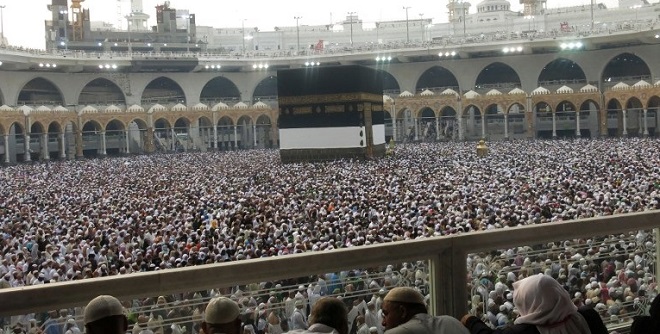
Mecca, Saudi Arabia | AFP |
The Muslim hajj pilgrimage which begins on Saturday in western Saudi Arabia is one of the world’s largest annual gatherings.
Here are some figures illustrating its scale, according to officials and local media:
- – More than 1.4 million foreign pilgrims from around the world are expected, alongside about 300,000 from inside Saudi Arabia
- – Pilgrims to be transported on 18,000 buses, including 1,696 which are new
- – 60,000 employees mobilised by Ministry of Hajj and Umrah
- – 158 sickbays along the pilgrimage routes. 25 hospitals and 5,000 hospital beds available
- – Several helicopters, 100 ambulances and 51 medical buses on standby
- – 17,000 emergency services personnel deployed
- – 1.5 million containers of Zamzam water to be distributed on Sunday when the hajj peaks
- – 23,000 cleaners to keep the Mecca area tidy
- – Foreign pilgrims spent almost 20 billion riyals ($5.3 billion) during the hajj in 2015
- – At least 2,297 pilgrims died during the 2015 stampede, according to foreign officials in more than 30 countries. Saudi Arabia gave a toll of 769
Hajj in realtime: the spiritual goes virtual
Hajj has gone high-tech. A religious ritual performed 1,400 years ago by Prophet Mohammed and which drew believers arriving on foot and on camels for centuries is today broadcast live through cyberspace.
“Technology is now part of hajj,” the annual Muslim pilgrimage to Mecca and Medina in present-day Saudi Arabia, said Kamel Badawi, an engineer from Mecca who invented an “intelligent umbrella” with Palestinian colleague Manal Dandis.
Among its features, the umbrella uses solar energy to cool the user.
Until recently, cameras were not even allowed into the Grand Mosque, Islam’s holiest site which draws close to two million faithful for the hajj, which this year starts formally on Saturday.
Pilgrims are also walking around with arms outstretched to broadcast their hajj live to family and friends by mobile phone.
Others have their eyes fixed on prayers they have downloaded.
It’s a change that seems irreversible and dramatic.
Until recently, cameras were not even allowed into the Grand Mosque, Islam’s holiest site which draws close to two million faithful for the hajj, which this year starts formally on Saturday.
The annual rite is one of the five pillars of Islam, which capable Muslims must perform at least once, marking the spiritual peak of their lives.
If they need clothing advice, or even diabetic information, that and all sorts of other support is available on Internet sites and applications.
 The Independent Uganda: You get the Truth we Pay the Price
The Independent Uganda: You get the Truth we Pay the Price


